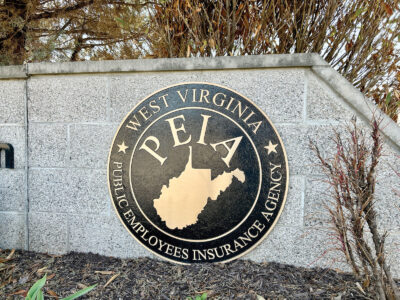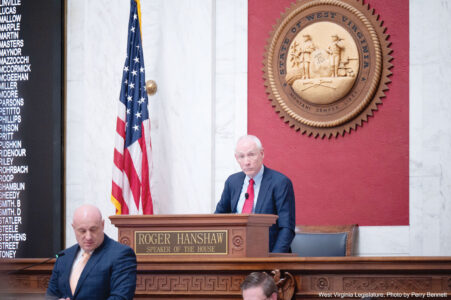Doctor’s Note: West Virginia lawmakers, interest groups await call for possible PEIA special session
- Gov. Patrick Morrisey and the West Virginia Legislature could soon meet in a special session to discuss cost-saving options for the Public Employee Insurance Agency. (Photo by Steven Allen Adams)
- Gov. Patrick Morrisey uses a white board to explain different stresses on West Virginia’s general revenue budget, including the rising cost of PEIA, during a January press conference. (Photo by Steven Allen Adams)
- Deputy House Speaker Matthew Rohrbach, seen here presiding over a March 7 House of Delegates floor session, said lawmakers need to find a way to bend the cost curve of PEIA while maintaining the services public employees expect. (Photo courtesy of WV Legislative Photography)
- CWA Representative Elaine Harris believes the state needs to use surplus funds in special revenue line items to put into PEIA to limit future premium increases (Photo courtesy of WV Legislative Photography)
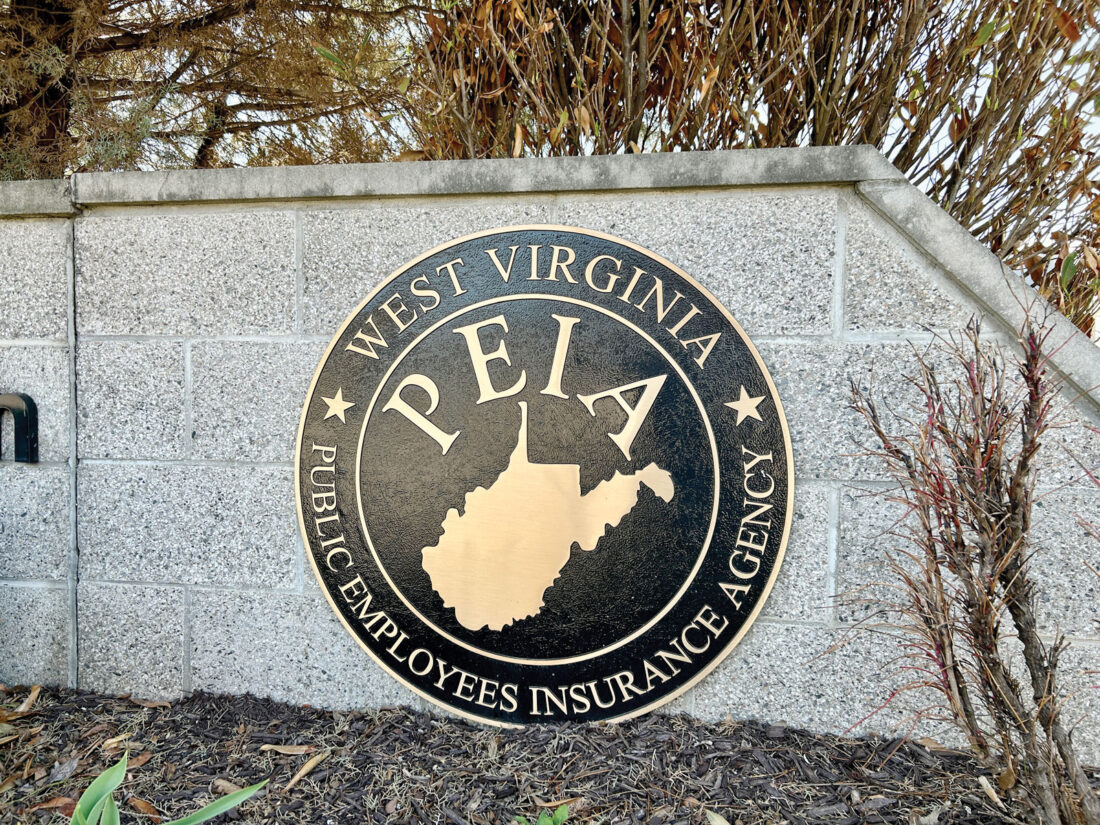
Gov. Patrick Morrisey and the West Virginia Legislature could soon meet in a special session to discuss cost-saving options for the Public Employee Insurance Agency. (Photo by Steven Allen Adams)
CHARLESTON — With Gov. Patrick Morrisey’s first special session of 2025 likely to be focused on health care costs for public employees, lawmakers will have to contend with what to do about the Public Employees Insurance Agency.
“That was kicked down the road for many, many years,” Morrisey said during an April press conference celebrating his first 100 days in office. “I don’t intend to kick it down the road. We have to bring everyone together, all the stakeholders: listen, learn, and then you’ll be seeing some activity.”
First established by the Legislature in 1971, PEIA provides health care coverage for all state employees, including public colleges and universities and county boards of education. It also provides coverage for participating city and county governments.
As of June, PEIA’s total enrollment was 74,556, a slight decrease from 74,584 the previous year.
A budget document prepared by the state Department of Revenue in February projected an 8.5% increase in PEIA medical costs for the current fiscal year, growing to 10% by fiscal year 2029. Prescription drug costs are projected to grow by 15.5% this fiscal year, with fiscal year 2029 drug costs projected to increase by 17%.
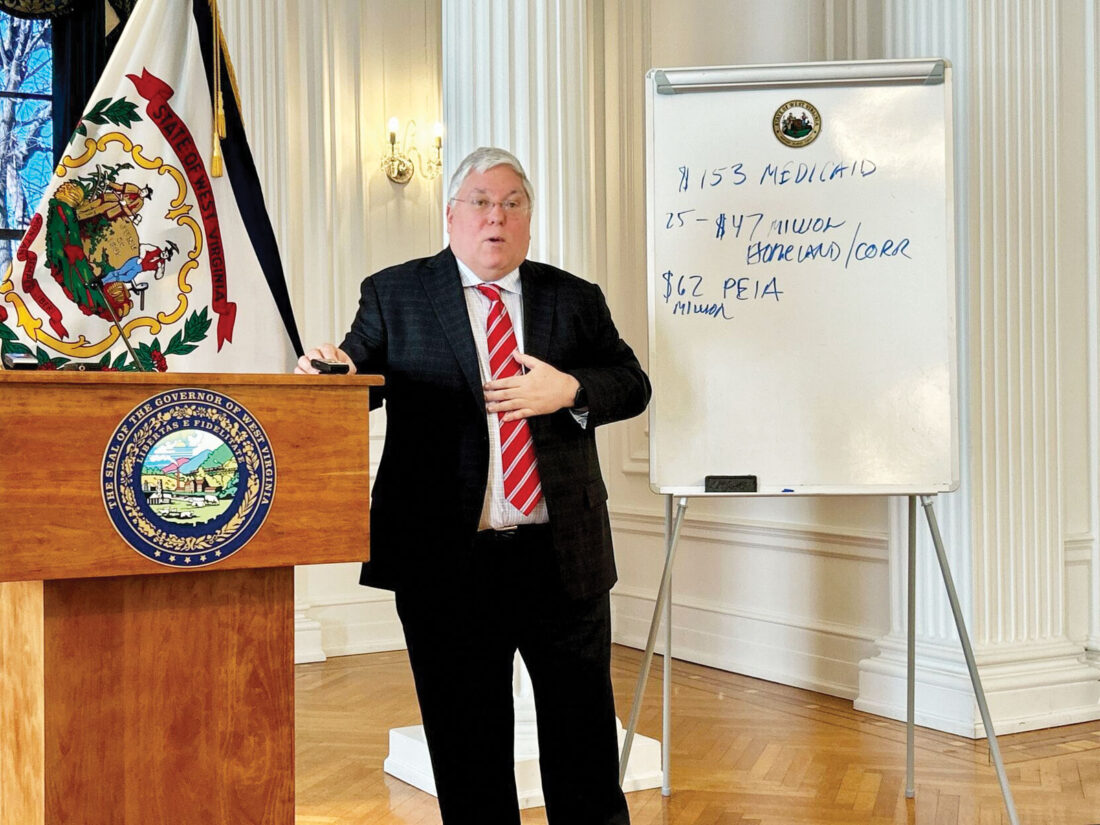
Gov. Patrick Morrisey uses a white board to explain different stresses on West Virginia’s general revenue budget, including the rising cost of PEIA, during a January press conference. (Photo by Steven Allen Adams)
According to the state’s six-year general revenue budget forecast, the state’s share of PEIA premiums is expected to increase by $49 million in fiscal year 2027, $56 million by fiscal 2028, $63 million by 2029 and $70 million by 2030. Those projected increases will necessitate premium increases on public employees going forward unless reforms can be made.
“These assumed increases will require the board to raise premiums, modify benefits, or use prior year gains to fulfill plan obligations and maintain the required minimum reserves,” according to the fiscal year 2026 budget report.
House Deputy Speaker Matthew Rohrbach, R-Cabell, said discussions between legislative leadership and the governor’s office about a special session are ongoing. But everyone is in agreement that PEIA needs to be around for public employees for a long time.
“I think what we’re looking at (is) our options that would then bend the cost curve going forward,” Rohrbach said by phone Thursday. “I don’t think we’re looking to take anything away from anybody now, but how can we manage to plan it (in) such a way that’s not going to continue to have the increases that we’ve had. That’s very much in the employees’ benefit and the state’s benefit.”
Medical billing
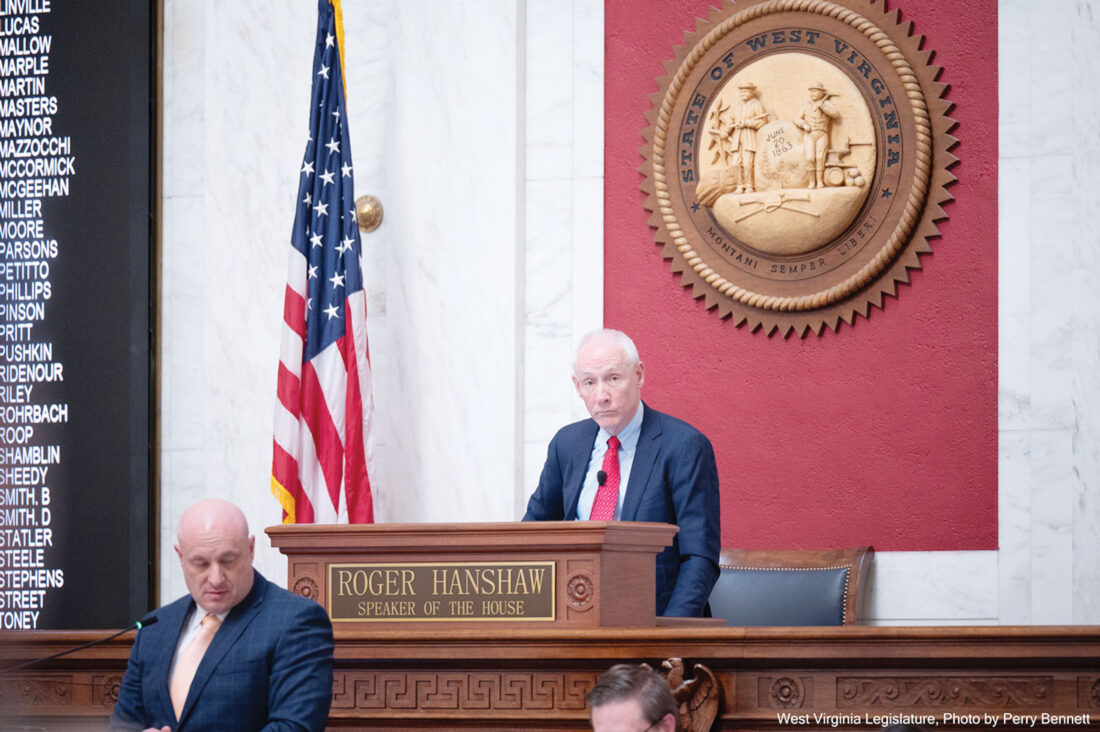
Deputy House Speaker Matthew Rohrbach, seen here presiding over a March 7 House of Delegates floor session, said lawmakers need to find a way to bend the cost curve of PEIA while maintaining the services public employees expect. (Photo courtesy of WV Legislative Photography)
A report released in July by Continuing Care Actuaries PEIA estimated that PEIA’s financial plan covering fiscal years 2025 and 2026 and going into 2027, 2028 and 2029 is projected to generate enough revenues – with the help of available surpluses – to meet projected insurance and administrative costs. However, those projections were contingent on significant revenue increases from employer and employee premium increases, with future legislative appropriations required.
“The conclusion of long-term solvency for the program over the five-year forecast is based on significant revenue increases in employer and employee premiums in later fiscal years of the plan through FY 2029 as approved by the Board,” wrote David Bond and Chris Borcik with Maryland-based Continuing Care Actuaries.
As of the end of fiscal year 2025, PEIA collected $1.119 billion in revenue and had $1.056 billion in expenses, resulting in a $63 million surplus for the fiscal year that ended on June 30. Total fund reserves of $145 million, or 14.1% of projected expenditures, exceeded the minimum actuarial required reserve amount of $125.9 million.
For fiscal year 2026, which began July 1, Continuing Care Actuaries projected an end-of-fiscal-year surplus of $94.7 million, with the total reserve fund projected to grow to $239.7 million.
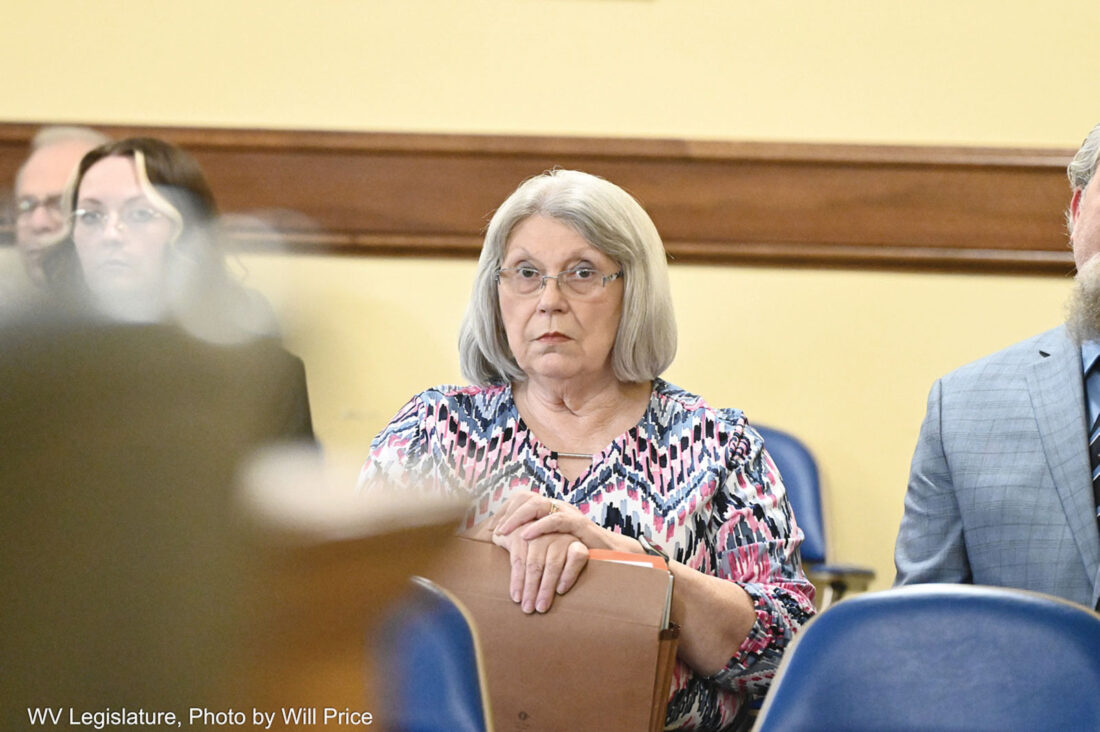
CWA Representative Elaine Harris believes the state needs to use surplus funds in special revenue line items to put into PEIA to limit future premium increases (Photo courtesy of WV Legislative Photography)
PEIA’s total fund was projected to have surpluses of $73.1 million, $46.3 million and $58.1 million surplus in fiscal years 2027, 2028 and 2029, respectively.
PEIA’s revenues are based on premium rates, assumed investment income and significant general and special revenue allocations appropriated by the Legislature and approved by the governor.
Last year, the PEIA Finance Board approved premium increases for state employees beginning July 1 of 14%, a 16% increase for local government employees and a 12% increase for retirees – an increase of approximately $113 million.
The Finance Board also approved an increase of 40% in out-of-pocket maximums for state and local government employees, as well as increases in co-pays. The monthly spousal surcharge approved a few years ago by the Legislature will jump from $147 to $350. Administration fees for state and local fund employers will also increase by $2.50.
Senate Bill 268, passed by the Legislature in 2023, returned PEIA to an 80/20 employer-employee match for state employees beginning in fiscal year 2025, with the employee/employer match going to 70/30 for out-of-state medical care for non-contiguous out-of-state counties. Among other reforms, SB 268 set the reimbursement rate for all health care providers at a minimum level of 110% of what Medicare reimburses.
Future increases in revenue for PEIA will be due to the annual projected growth in medical and prescription drug costs. According to the report, future medical and drug claim trends are projected to increase by 0.5% beginning in fiscal year 2026 and in each successive fiscal year through 2029. Historical data since fiscal year 2024 shows fluctuations in these claim rates.
Rohrbach said one of the largest drivers of prescription drug costs over the last several years is the explosion of semaglutide prescriptions, such as Ozempic and Wegovy. These drugs were primarily prescribed to people with diabetes for blood sugar and weight management, but doctors are beginning to prescribe them solely for weight management. PEIA recently cracked down on this practice.
The cost of prescription drugs “actually has been almost the entire cost curve problem for the last four or five years,” Rohrbach said. “That’s also been a national problem, but (to) the extent the state can do things to help our part of it, we certainly should.”
Rohrbach also said PEIA should consider changes to some plans to encourage the use of health savings accounts. The recently signed One Big Beautiful Bill Act expands HSA benefits, allowing them to be used in some catastrophic health plans and for direct primary care.
“Things that are on the table would be looking at higher deductible plans with a health savings account option that the state could put money in and the employee could put money in,” Rohrbach said. “It’s very tax-advantaged, it’s portable, and it accumulates so that 10 years down the road people can have a significant amount of money built up to help them for that catastrophic event that they may have.”
Possible prescriptions
Interest groups representing public employees and West Virginia’s health care providers are watching what Morrisey and the Legislature might do to reform PEIA.
Elaine Harris is a representative for the Communication Workers of America, an executive board member for the West Virginia AFL-CIO and a former member of the PEIA Finance Board. Her union represents different classes of public workers, including West Virginia State Police troopers and correctional officers and staff of the Division of Corrections and Rehabilitation.
“Every company, every state or city or county (entity), they’re all seeing the rising costs of health care. That’s not just a state problem: it’s a national problem,” Harris said. “When I say health care, also the cost of prescription drugs. When you look at the expenses as far as PEIA, a huge amount of it is prescription drug costs.
“I’ve advocated to say, look, let’s come together and put any political differences aside, because this shouldn’t be about politics. It should be about looking at what we can do collectively together,” she said.
Harris recommended the state consider dedicating any available PEIA reserve fund surpluses that exceed the minimum actuarial required amount, as well as any state account that runs a surplus, to offset any potential premium increases.
“I think that you have to find some monies that could be dedicated solely (to PEIA) each year,” Harris said. “It’s not a new tax; it’s something that’s already there. Take those monies and put them in a fund. A line item has to be identified for that.”
One option pushed by public employees’ unions would include reforming the 80/20 match, making the state’s portion no less than 80% and the public employee’s portion no more than 20%.
“Whenever we look at premiums for what people are paying, we had the legislation making it 80/20. But is it really an 80/20? People have said ‘I’m really paying more than that,’ Harris said.
Another option could be making changes to health care provider rates. SB 268 set the reimbursement rate at a minimum level of 110% of what Medicare reimburses, though former PEIA Executive Director Brian Cunningham told lawmakers during interim meetings in November that the original intent for that rate was for hospitals, not all providers. Harris agreed with that assessment.
Harris also said that PEIA needs to engage in better education of its different plans to public employees to determine the right plan for them and their families.
Jim Kaufman is the president and CEO of the West Virginia Hospital Association, which represents 78 in-state hospitals and health systems that employ more than 53,000 people. He said a healthy PEIA was good for everyone in the state.
“One of the things we all want to see is we want to make sure PEIA remains a viable benefit for state employees because we all recognize employer-sponsored coverage — whether it’s a private industry or state government or the federal government — is a great benefit that helps recruit and retain talent,” Kaufman said.
Kaufman said he hopes lawmakers leave the 110%-of-Medicare provider reimbursement in place for all health care providers.
“That is relatively new, and even at 110%, that is still below the cost of care for most providers, because Medicare does not cover costs,” Kaufman said. “When people hear 110%, they think it’s above cost. It is not. … We believe having those physicians, nurse practitioners and other clinicians getting a decent reimbursement – while it’s not covering cost – is a lot better than what was previously paid.”
One way Kaufman said PEIA could cut down on costs and put more money back into tamping down future premium increases is encouraging more use of in-state health care options. While some providers in border states accept PEIA, the 70/30 employee/employer match for out-of-state medical care makes such care expensive.
“For the vast majority of health care services, everyone can receive excellent quality of care right here in West Virginia,” Kaufman said. “One of the things they should consider is how do we keep those resources and those West Virginia dollars here in-state versus paying out-of-state providers more than we would pay in-state providers.”
Kaufman also praised Morrisey’s recent efforts at encouraging healthy lifestyles, such as the Mountaineer Mile trail effort and emphasizing healthy eating. Kaufman said there needs to be an increased focus on encouraging public employees – who often skew older – to take more control of their health and be proactive before major health issues arise.
Another way to help would be to encourage younger, healthier public workers to participate in the PEIA pool. But Kaufman stressed that the moratorium put in place in 2023 on new local fund participants – city and county governments – should remain in place.
“If they’re hiring younger people to work in state government, that’s great,” Kaufman said. “If they’re going to expand PEIA to other non-state agencies, we would strongly oppose that because all you’re doing is weakening the already small and fragile commercial employer market in West Virginia.”
Steven Allen Adams can be reached at sadams@newsandsentinel.com.

